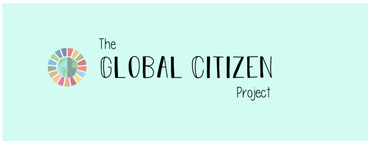 By Breanna Heels In 2009, as part of my degree in International Development from McGill University, I traveled to East Africa for a field study semester. As part of our research, we had to select a Millennium Development Goal to focus on, and I chose Universal Primary Education. Going into classrooms sparked my passion for teaching, and it was from this experience, I decided to pursue a career in education. When I began my teaching career in the same town I grew up in, I wanted to share my global experiences with my students and connect them to the world so they could see themselves within it, I used the Millennium Development Goals as a framework for my teaching and in 2015, when they became the UN Global Goals, these 17 goals became the new framework I used, and started a Think Global, Act Local project. Throughout the year, we studied the Global Goals, and as a culminating project, each student selected a UN Global Goal to think globally, and develop a local initiative to work towards that goal, to act locally. The Global Citizen Project is an initiative that started in my classroom because I believe that every student can change the world. I want every student to be a global thinker and a changemaker. When I saw the impact this project had on my students, and has continued to have on those students, I knew this project had to be bigger than my own classroom. The students saw themselves as global citizens, became engaged in global and local issues, and didn’t just know about them, but wanted to do something about them. To see this project in action, you can view this video by the Ontario College of Teachers or read about it here. "Never underestimate that kids care. You can't make them care, but you can empower them to care by educating them." I started the Global Citizen Project as a way to share the framework with teachers in a way that is accessible and ready to use. Each month, the project focuses on one of the Global Goals. At the beginning of each month, you will receive an email with resources and teaching ideas to help guide your class in learning about that UN Global Goal and completing the monthly challenges. Each month, your students will complete 3 challenge that works towards the UN Global Goal. The challenges provide concrete and tangible ways for students to act locally for that Goal. You can choose to complete as many of the challenges as you like, but in order to become a Global Citizen Classroom, you must complete 3 challenges each month! My greatest lesson as a teacher has been that kids care. You can’t make them care, but you can empower them to care. If you would like to join The Global Citizen Project and empower your students a global citizens, please join here. 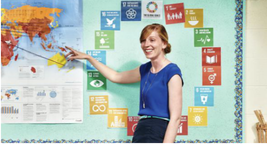 Breanna Heels is a teacher adventurer. As a TeachSDGs Ambassador and Experiential Learning Teacher for Bluewater District School Board in Ontario, Canada, she believes the classroom should be a microcosm of the world and delivers her curriculum through the lens of the UN Global Goals. Breanna is a National Geographic Grosvenor Teacher Fellow, a National Geographic Certified Educator, a Royal Canadian Geographical Society Fellow and recipient of the Innovation in Teaching Geography Award. Breanna has been featured by the Ontario College of Teachers, National Geographic and Canadian Geographic. Breanna is also the founder of The Global Citizen Project. Connect with Breanna on Twitter @BreannaHeels and follow The Global Citizen Project @teachtheungoals 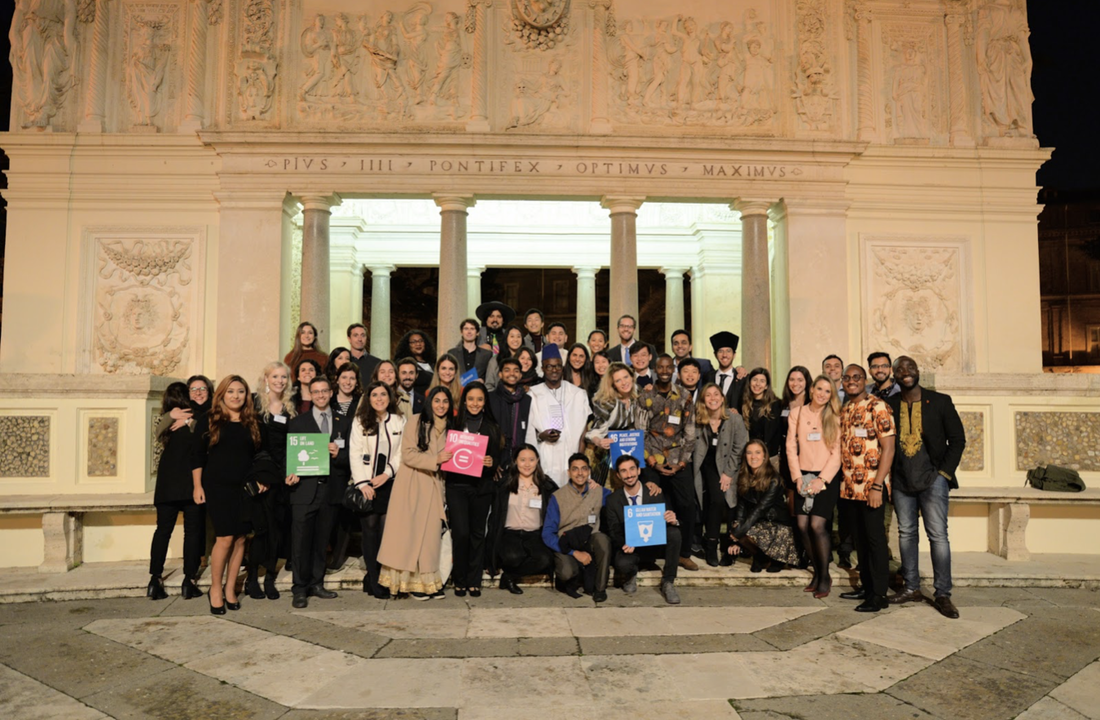 By Estella Owoimaha-Church, #TeachSDGs Ambassador Let me begin by stating this post is over a month past due. The tardiness of this post does not diminish my impetice to share. I figured I should complete it before 2019 hits us. In October, I was fortunate enough to receive an invitation to participate in the 5th annual Vatican Youth Symposium hosted by the Pontifical Academy of Sciences (PAS) and the UN Sustainable Development Solutions Network (SDSN) in Vatican City. My invitation came from Bishop-Chancellor, Marcelo Sánchez Sorondo of the PAS and Siamak Sam Loni, Global Coordinator of SDSN Youth. I was more than happy to accept the invitation as a opportunity to represent RFK Human Rights & #TeachSDGs. The Youth Symposium is an “annual gathering of young leaders from around the world, discussing and generating solutions for the most urgent issues of humanity...It has developed into a leading global forum for young leaders in sustainable development and an intergenerational platform for building social movements.” This year’s theme was “Youth Leadership for Integral Human Development - Laudato Si’ and the Sustainable Development Goals” which sparked dialogue and collective action towards Sustainable Development among youth around the world. The symposium featured several tracked conversations; some on education, some related to funding, and others around technology. All of these conversations can be found here. 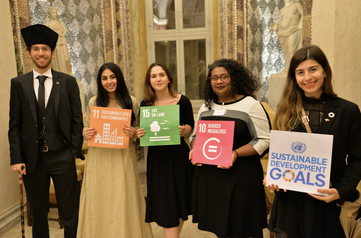 From far left to right, Toyger Akay, Serena Mukhi, Bugda Giritlioglu - roommate, Estella Owoimaha-Church - me, and Buket Altincelep From far left to right, Toyger Akay, Serena Mukhi, Bugda Giritlioglu - roommate, Estella Owoimaha-Church - me, and Buket Altincelep My Roomie The invitation to participate in the youth symposium came just after my 30th birthday. Forgive me, my vanity is showing, but I was all too flattered to be considered a “youth” for probably the very last time in my career. I was made even more aware of this when I met my roommate, Bugda. Me - an older Millennial. She - a member of Generation Z and current high school senior. When we met at check-in, I was beyond shocked to find out she was in high school. A better word is impressed; a young girl, from Turkey, traveling on her own, to the Vatican, to speak and share her project in Sustainable Development. I, of course, immediately went into teacher-mom-mode, feeling as though I needed to look after her but she proved she was more than capable within the first few minutes we were together. I had to have a mental check-in and remind myself we were there for the same reasons. Clearly, she can take care of herself. She was one of the youngest participants at the symposium and had received the very same invitation. Student voice is so imperative to my daily practice and to this global movement for sustainability. Whenever given the chance, I seek to elevate youths’ voices and concerns. As her roomie, I had the unique fortune of capturing her story. Below are some of her responses to the questions I asked her. EC: What was your project or reason for being invited to participate in the Youth Symposium? BG: I went..as a UN- Habitat Youth volunteer. I was the only high school student who participated in that symposium, so it makes the event even more exciting for me. The purpose I went there was to learn and improve myself as a UN- Habitat youth volunteer for the projects I’ll organize in Turkey. My aim is to build awareness for the young generation in Turkey. I want to start a movement in Turkish schools, because young people have both energy and the motivation to improve our world in many ways but they cannot take action because of the lack of belief and I want to change that. EC: What was your favorite part of the symposium or your biggest takeaway? BG: The most important thing I learned from the symposium was, that we need ACTION. We have a really limited time for making sustainable changes and we are still not aware of the emergency of the situation. We have so much to do- even if we [have] done a lot. There are lots of people trying to make a better place for our future with great projects from all over the world but most of them are not sustainable, which is the most important issue. Also, I learn that those sustainable development projects need great funds -which is hard to find. So, the collaboration of organizations and the humanity is really important. EC: Why or how do the SDGs matter for you and your generation? BG: We have only a limited time to save our world from...complex global problems. As UN mentioned, there is only 11 years left to slow down or stop...climate change and find solutions for the 17 sustainable goals. So, I think that in such a situation our generation becomes the last hope for our world. Also, I think that -sadly-, our generation is the only generation which starts feeling the consequences of theses problems, which makes us more aware. But also we have the motivation, energy end technology for a positive change. EC: What are your plans are for future? School? Career? Life? Continued service? BG: I’m now a senior student in Erenkoy Isık High Schools, this year I’ll make my university applications and I want to study Global Challenges and Sustainability for my bachelors. Then do my graduate studies on Media and Communication, because I want to learn more and improve myself [on] how to solve the complex global problems in our world. I believe that learning is not enough if I cannot spread my knowledge to the world. So, my current plan is after studying Global Challenges and Sustainability, spreading my learnings through effective use of communication...to the world and starting a world changing ACTION. See what I mean? I-M-P-R-E-S-S-E-D. My interview with Bugda really sums up how I felt during the symposium and immediately after. Millennials, in my opinion, kind-of have a bad reputation. We’re characterized as either desensitized to the point of indifference, too consumed with social media or technology that we seem catatonic, or simply too cool to care. But as I sat listening to all these beautiful people from all around the world share their stories, their work, life-long projects, labors of love, and collective humanity, I felt a swelling of pride. For, I think the first time, I was truly proud to be a millenial and a shepard, so to speak, of Generation Z. I was reminded that I am not alone in this effort. My role in the classroom is imperative and teaching the Sustainable Development Goals a non-negotiable. Before we parted ways, she presented me with a trinket - a beautiful, blue, glass cat - from her home country. With this gift, I had a new friend and colleague in spite of generational divides and international borders. It lives in my classroom, on my desk, as a reminder of our friendship and a manifestation of my faith. My faith - always and forever - lying within the youth I serve and our shared humanity. Symposium Takeaways The morning sessions began with a message from Monsignor Sanchez: “You will inherit the world from your elders. Young people the world is yours, you lead us into the future...Love into action...Change the globalization of indifference into globalization of love...Don't Sacrifice dignity in the name of profit.” Profound words to kick off dialogue about collective work and humanity in a movement toward sustainability. I listened, with the utmost pride and admiration, to youth share their challenges and success in their efforts to meet the goals. Every time someone took their turn to speak, I could not help but process the same thoughts over and over again. And that is, teaching is the one profession that creates all other professions. This was even represented in how the symposium was divided into tracks. When my theatre students prepare their college applications, there is always an awkward conversation around their major selection. Usually, my kids are afraid of hurting my feelings when they have to break the news to me that they, indeed, won't be majoring in theatre. It’s sweet but I usually respond with, “Good!” Sometimes they are taken aback and little offended but I am able to remind them of a few things. For one, their futures are not tied to my past. They must forge their own paths. Second, their skills as artists are beyond transferable and my ultimate hope is that I have helped them become empathetic-global-collaborators who are going to act in their respective fields with compassion, tolerance, and humility. Imagine, a future where every student at some point in their early and secondary education had a teacher who prioritized community, empathy, and shared responsibility in shaping our world for the better. This generation is the largest generation of young people ever. More and more, young Millennials and Generation Z are looking to be active. They are launching more startups and are gaining higher education degrees. Eventually, they will make up at least 75% of the global workforce. Consider numbers in the U.S. alone. At least 3.2 million educators in in the United States. Let’s assume each has a classroom of at least 30 pupils (that classroom size would triple for most secondary educators). That would be nearly 96 million students. And, again, that’s just here in the U.S. If every child around the globe has an educator in their life who has taken the pledge to teach sustainable development, we’d end up with a legion of more than 100 million youth who will reshape the world for good. I am lucky because I no longer have to imagine it. I witnessed it at this symposium. Furthermore, I was inspired to keep teaching for as long as I can if it means several more generations of young leaders such as those I met in October at the Vatican; such as Budga. So, teachers in this movement for sustainable development - TeachSDG ambassadors - we are on the right track. We have to continue to prioritize SDG 4, Quality Education, and reframe how we view our work in our respective learning spaces. While our profession lacks the respect it deserves, remember that each day you show up to work is a form of direct action in this movement. We have to empower ourselves and each other in order to sustain ourselves, as well as this movement. As countries change leadership throughout the years, teachers will most likely remain in their learning spaces regardless of who is in power. Our students are on their way to change the world, one industry sector at a time; one global goal at a time. We are on our way to creating a lasting impact in this movement one lesson plan at a time; one student at a time; one day at a time. Possibilities for Collaboration(s) Below are just some of the individuals and organizations that were represented at the Vatican Youth Symposium. If we are going to be successful in the movement towards Sustainable Development then synergy will have to take form and bring our collective efforts together. We cannot continue to work in silos and isolation, which is where we teachers end up far too often. Hugh Evans & Global Citizen Sam Loni & SDSN Youth Dr Anthony Annett & International Monetary Fund Tabitha Mpamira-Kaguri & EDJA Foundation Tomas Insúa & Global Catholic Climate Movement Jose Maria Del Corral & Scholas Camille Bangug & Millennium Campus Network Yi Jun Mock & SDG Students Program Professor Fernando Reimers & Harvard University Amanda Abrom & Global Schools Program Kinsu Kumar & Kailash Satyarthi Foundation Yesika Aguilera & Tespack Christina Myers & Omni Institute Filippo Veglio & World Business Council on Sustainable Development Dario Piselli & Youth Solutions Program Facundo Lugo & La Alameda Foundation Thomas Preiss & Common Goal Vanessa Fajans-Turner & Sustainable Development Solutions Network Djaffar Shalchi & Human Act Lynn Zovighian & Nexus 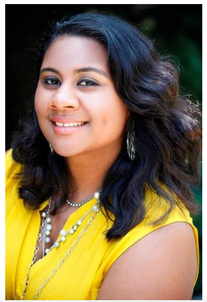 Estella Owoimaha-Church was recently named a Global Teacher Prize Finalist (2017). She holds an M.A. in Education: Language Arts & Literacy from Loyola Marymount University and a B.A. in African-American Studies: Urban Education from California State University, Northridge. Estella teaches theatre in Los Angeles, helping youth to employ performing arts as a community service tool. Mrs. Church is an education consultant, as well as a reading, curriculum and pathway specialist. Though in the classroom full time, she remains active with several community organizations, including Robert F. Kennedy Human Rights, training teachers in human rights and social justice education. “The arts are a transformative tool; when paired with the SDG’s, the arts can heal communities and build bridges, cultivate youth into global citizens, and usher in the SDG’s by 2030.” She is humbled and looks forward to serving her community as an #TeachSDGs & Varkey Teacher Ambassador. Connect with Estella on Twitter at @eochurch. 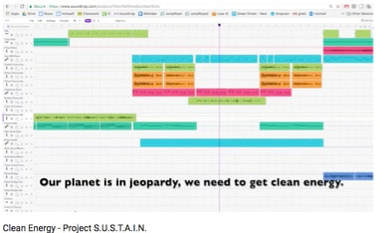 By Tracy Williamson Welcome to Room D138 Room D138 at Gorham Middle School is not your average music classroom. Steel drums, guitars, buckets, and choral music lines one half of the room, while the other side houses computers, laptop charging stations, headphones, USB mics, and MIDI keyboards. Students with varying musical backgrounds burst into this room every day, eager to create fun, dynamic music. They combine traditional instruments and voices with cutting-edge music technology through collaborative student-driven projects. Record Deal: Collaborating on International Album I first learned about Project S.U.S.T.A.I.N.—Students Using Soundtrap To Accomplish International Necessity – after coming across a Facebook post. Grades 6-12 technology teacher, Ben Kelly was asking music teachers to join him in creating a collaborative international album to support the United Nations 17 Sustainable Development Goals(SDGs) by contributing one or more tracks. I immediately saw the bigger picture of how this project could offer a dynamic venue for students to work together regardless of time and place on a project that could have real-world implications. Hook, line, sinker. I signed onto this exciting new project for my students. Changing Policy, Changing Technology Over the past 15 years, I have built a solid middle school general music curriculum that integrates efficient, high-quality student technology use. Through a one-to-one device partnership with the Maine Learning Technology Initiative, each student was issued a MacBook loaded with GarageBand, a digital audio workstation, which previously formed the cornerstone of my technology-based music curriculum. I learned a valuable lesson last school year—the technology we use in schools can change quickly at the whim of the school budget. In 2016, we introduced the use of Chromebooks, a change that led me to search for a new Digital Audio Workstation (DAW), a platform that allows users to create music electronically that would offer even more flexibility. That’s when I discovered Soundtrap, the first-of-its-kind web-based, cross-platform, collaborative music-recording studio, which would allow me to continue teaching my curriculum across multiple devices. Best Laid Plans By September 2017, I had a group of 7th- and 8th-grade students signed onto Project S.U.S.T.A.I.N. Each brought a variety of different musical interests that ranged from opera training, a passion for pop singing, virtual instrument experience, and electronic composition. During our first meeting, students were introduced to the Sustainable Development Goals that the United Nations has set forth as a call to action for all countries to strive to improve the overall health of our people and planet. Students starting by using Google Classroom to upload songwriting resources, gather information on the SDGs, brainstorming lyrics, and creating a chart in which they identified personal strengths that each would bring to the project. By the time we completed these steps, they had created three Soundtrap project templates in which all students were collaborators and were ready to start creating! Or, so we thought. The Missing Puzzle Piece Like many new projects, we did not get through it without our share of challenges. In fact, by the beginning of December the students had accomplished very little. Despite having a group of extremely talented and passionate music students, they were having trouble committing time to the project outside of school. The solution came in the form of designating a 20-minute block during the school day as a regular weekly meeting period, which we later identified as the missing step needed for the project to truly take off. During this time, the students decided to focus their efforts on writing a single song. After many discussions and brainstorming sessions to define the goal of the project—and what people can do to create more efficient and cost-effective energy—they began writing lyrics and outlining the form of the song. Working in Sync Once they were ready to start recording, I carved out a couple of hours on a Friday afternoon for everyone to meet. They produced the music using MIDI keyboards, headset microphones, and other resources. We began with the students meeting together to coordinate their musical goals, and then splitting off into separate spaces to work. By leveraging Soundtrap’s collaborative workspace and text chat capabilities, the students were able to work in separate groups, each devoted to recording distinct sections of the track at the same time. While some recorded melodies, others worked on bass guitar parts, with a third group developing chords and MIDI string sounds. Every time a student saved his or her work, the others received a notification and were able to sync their parts together. Their overall progress was monitored on a big screen and sound system in the music room. By May, just five months after implementing planning meetings, the students had successfully completed their song! Lessons Learned Throughout the project, students were creative, collaborative, and resourceful, as they discovered a variety of ways to use Soundtrap and the other digital tools at their disposal. Moving forward, I plan to use the lessons we learned through this process to inform my work with this year’s students. For those teachers who are interested in joining me on this journey, here are some strategies for success:
My students were thrilled when their song was included on Ben Kelly’s Project S.U.S.T.A.I.N. album. They also proudly presented their work at a district-level Gifted and Talented Visual and Performing Arts showcase in early May. Indeed, this EdTech-driven project proved to be a highly engaging way to motivate students to not only improve their music creation skills but also connect their work to important global issues that resonate far beyond the walls of the school. About Tracy Williamson
Tracy Wheeler Williamson is General Music Teacher, Choral Director, and Steel Band Director at Gorham Middle School in Gorham, Maine. She is an Apple certified teacher, certified Soundtrap Educator and Expert and is working on her Google Educator certification. Tracy holds a Bachelor of Music degree in Flute Performance from Boston University and a M.M. in Music Education and Flute Performance from Boston Conservatory. Connect with Tracy on Twitter @GorhamMS_Music. 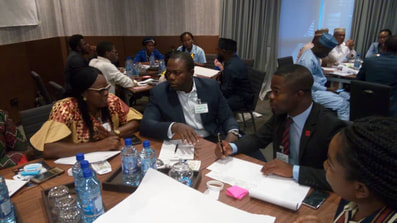 By Jacob Sule, #TeachSDGs Ambassador This summary captures a one day programme, interactive dialogue at the workshop on Educating and Activating Children for SDGs in Nigeria which took place on the 8th of November, 2018 in Abuja, Nigeria. The event brought together some government chief officers from the office of the Senior Special Assistant to the President of Nigeria on the SDGs, delegates from the Federal Ministry of Education, Universal Basic Education Commission, National Union of Teachers, National Teachers Institute, Civil societies and Non- profit organizations, Youths and Educators from various states in Nigeria. The workshop began with opening remarks by World Largest Lesson Director, Alison Bellwood alongside Stephanie Mason, Global partnership manager, the representative of the Senior Special Assistant to the President of Nigeria on the SDGs in Nigeria, and continued with brief remarks from the Federal Ministry of Education, British Council representative, UNICEF, non-profits organizations, and youth leaders. It concluded with a set of presentations from other international agencies working on the SDGs in Nigeria. Session 1: Welcome and Opening Statements Opening the workshop, World Largest Lesson’ Director Alison Bellwood highlighted the need to develop and engage children in Nigeria to develop innovative learning tools and inspire citizens to take action around the Global Goals. Also, a focus was presented to propose and discuss a collaborative effort to deliver a week of SDG learning across Nigeria in 2019 during which all children in upper primary and lower secondary school take part in SDGs learning activities. Senior Special Assistant to the President of Nigeria on the SDGs represented by Dr. Bala Yunusa made his presentation on the progress, efforts on data harmonization, and national collaboration with all stakeholders working around the Global Goals in order to create citizen engagement in the implementation of the SDGs Targets. The office has produced the SDGs in major Nigerian Languages which ready for launch. Several educational materials and activities have also been created around the goals and made available for taking action. Representative from the Federal Ministry of Education underscored the growing needs and engagement of teachers in ensuring that they are well exposed to the SDGs Goals and are working around the goals with designed curriculum. Session 2: Interactive Sessions Delegates identified barriers to success and generated solutions to the 2019 SDG Week learning in Nigeria, amongst the delegates who made presentations during the session was Sule Jacob, TeachSDGs Ambassador in Nigeria. He highlighted several barriers such as lack of political will by government, difference in states educational policies, insecurity challenges, corruption, and poor funding. He however pitched some solutions which included proper sensitization and awareness about the Global Goals through the use of mass media and social media, steering committee to include private actors, civil societies and government officials to create synergy, adequate incentives for volunteers, favourable government policies and stability of government due to the forthcoming general election in February 2019. Proposed dates were identified for the launch of the SDG week in Nigeria; tentatively October 2019 was unanimously agreed because school activities are less demanding and students will not be preparing for any sort of examination within this time. Session 3: Plan for Leadership and Co-ordination There were robust discussions and dialogue between the Office of the Senior Special Assistant to the President of Nigeria on the SDGs and Federal Ministry of Education with respect to leadership and co-ordination of the SDG week in 2019. Various organizations made fantastic submissions as to the need to having a clear cut leadership void of politicking so as to achieve the desired results. Session 4: Closing Remarks Stephanie Mason, Global Partnership Manager, World Largest Lesson conveyed her gratitude to all participants. She extended her thanks to the Government of Nigeria, Federal Ministry of Education, and stakeholders for their efforts in promoting the SDG; she expressed her satisfaction with the various youth advocacies and congratulated participants on the extensive networking that had taken place which she hoped would continue going forward. This summary was presented by TeachSDGs Ambassador in Nigeria - Sule Jacob. By Tobias Simonsen In Denmark, less than 20% of the Danes are aware that the Sustainable Development Goals exist, although Denmark is ranked as second-best country to implement the SDGs according to the “SDG Index and Dashboards report 2018." Danish companies have started to recognize the benefits they can achieve by working with the SDGs in ways such as branding their products through SDGs, executing assessment of the company with SDGs as framework, and using the SDGs as tool to enhance well-being and good working environment among the employees. Danish politicians and educational institutions are also doing great work in creating the best possible frames for more people learning about the SDGs through policies and formal learning. The Danish civil society are also taking great responsibility in mobilizing citizens through awareness campaigns and Global Goals activity materials. But, what about the huge part of the population who are not organized in civil society organizations, who are too old to have the privilege of being taught about the SDGs in school, or who are not working in the departments where the companies are using the Global Goals in the strategic decisions? Well, as it is now, the starting point is building awareness about the SDGs. So, what can be done to reach a wider part of the population? Social Entrepreneurship is a method, which engages and mobilizes communities. Most people can spot an issue in their local communities, but fewer people have the skills and resources to transform issues into actions. In Tunisia, Amine has mobilized his local community to act against climate issues and for good working environments in the local school – through the method leading by example. Amine and his scout group managed to not only fulfill an extraordinary cleaning and renewing project, but they succeeded at the same time making it a common cause for the community. Social Entrepreneurship requires, that the people with knowledge and skills, are leading the way for the rest of the local societies – and this is why the Global Goals is such an extraordinary tool for sustainable development. The SDGs create a common language, which help us understand each other – whether it is policies, company’s business plans, or missions of civil society organizations - the common language allows us to mobilize and engage people who are not necessarily in touch with organizations or other institutions who are dealing with the SDGs – and are at the same time helping organizations to establish valuable partnerships for the goals. We can build the world we want to be part of – and, as you and I have the privilege of knowing the SDGs, we have a huge responsibility of reaching more people by informing and acting. The big question is now, how will you build the world you want to be a part of? 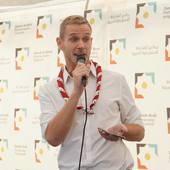 Tobias Simonsen is Board Member for one of Denmark's biggest youth organizations - the scout organization KFUM-Spejderne i Danmark Tobias is holding a Master’s Degree in Organisation and Strategy from Aalborg University, with a Bachelor’s Degree in Business Administration and Economics from the same university. Tobias has worked with sustainable development in the Trade Council at the Royal Danish Embassy in India, with business models for scout centres in Tunisia and assisted a PhD project about Danish and German minorities during his time at Hamburg University. You can connect with Tobias on Twitter at @SimonseTobias. 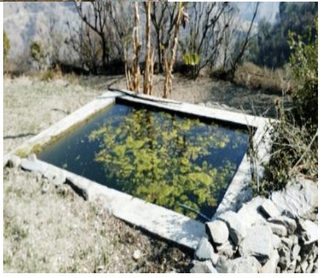 By Er. Anant Bhaskar Garg, Director, HaritaDhara Research Development and Education Foundation, Dehradun, India Water is ‘Elixir of Life’ for us and our mother Earth. Sustainable Development means development having sufficient natural resources for our future generations. Thus, United Nations (UN) with 193 Countries of the world launched 17 Sustainable Development Goals (SDGs). These global goals form the Agenda 2030 in which Goal 6 is on Clean Water and Sanitation and other Goals 13, 14, and 15 are interlinked for water. As per report from World Resources Institute, there will be serious water scarcity problem in 2030. Fifty four percent of the population is living in high and extremely high water stress in India. Therefore, we need methods, awareness about water conservation, judicious usage, quality, and harvesting. We are doing capacity building among school, college students, and community members through workshops, using games for learning and better understanding. Water harvesting is the way to conserve water in the hilly areas. The information revealed that region has three areas as per water availability: 1. Areas having perennial water sources 2. Area having seasonal water sources 3. Rain-fed areas totally dependent on rains Three case studies describing water conservation methods in different hilly regions of the India: 1. Bamboo drip irrigation in North-Eastern Himalaya One of the seven northeastern states Meghalaya in India use an ingenious system of tapping of stream and spring water by using bamboo pipes to irrigate plantations. It is so perfected that about 18-20 liters of water entering the bamboo pipe system per minute gets transported over several 100 meters and finally gets reduced to 20-80 drops per minute at the site of the plant. The tribal farmers of Khasi and Jaintia hills use the 200-year-old system. Bamboo pipes are used to divert perennial springs on the hilltops to the lower reaches by gravity. The channel sections made of bamboo divert and convey water to the plot site where it is distributed without leakage into branches. Water is dropped near the roots of the plant through manipulating the intake pipe positions to conserve water. 2. Spiti’s Kul irrigation - water from glacier to village of Trans Himalaya This area of Himachal Pradesh is a cold desert, but surprisingly agriculture is its mainstay. Villages in the Spiti subdivision are located between 3,000 m and 4,000 m, which mean they are snowbound six months a year. The crucial portion of a kul is its head at the glacier, which is to be tapped. The head must be kept free of debris, and so the kul is lined with stones to prevent clogging and seepage. In the village, the kul leads to a circular tank from which the flow of water can be regulated. Water from the kul is collected through the night and released into the exit channel in the morning. The kul system succeeds because Spiti residents mutually cooperate and share (for details please visit www.hrdef.org and see this video https://youtu.be/tL8J7ziefOo?t=95). 3. Uttarakhand’s Naulas, Guhls – water for domestic, irrigation in Central Himalaya This region is now facing problems in the storage of sufficient water, especially during summers, for drinking and irrigation purposes. Majority of the people are dependent on the local sources of water (dharas- springs). Therefore, revival of indigenous technology for rainwater harvesting, aquifer recharge, judicious use of water, and quality of water is needed in this region. Traditional methods such as naulas, guhls need to be rejuvenated for water conservation and solving scarcity problem of India. Workshops and Games HaritaDhara Research Development and Education Foundation (HRDEF) organized workshops on Water conservation, Rainwater Harvesting and Environment for Sustainable Development Goals (SDGs) 6, 13, 14, 15 time-to-times. Students of GyanDhara Opportunities for All with Learning (GOAL) program learned about water conservation, rainwater harvesting through a detailed session by Dr. Manisha Agarwal. They performed practical sessions on rainwater harvesting, understood water conversation methods, and importance of water. Students from GOAL program learned about SDGs, water management, and played the game “Water Roll” designed by Sustainability Centre, Arizona State University (ASU), USA. GyanDhara students participated in the United Nations Environment Program (UNEP) –DHI Eco Challenge 2017 international online serious game competition on water resources management for the river basin and sustainable development. Students from 20 countries are participating and this game is helpful to learn about water management, conservation, its usages, and SDG Goal 6. India has traditionally been a country of talabs, kuans, johads, baoris and dhara, many of which are on the brink of extinction. Reviving ancient Indian water management traditional knowledge in hilly region will be beneficial for local people and can reduce water scarcity. Taking recourse to traditional water harvesting systems with protection of contamination of natural water sources are measures for safe and sustainable water for future. Er. Anant Bhaskar Garg, Director, HRDEF, Engineer, Educator, and Microsoft Innovative Educator Expert (MIEE) with 22 years of experience in various capacities in academia and industries based at Dehradun, Uttarakhand. Published two books, 48 papers in Intl. Journals, Seminars, 2 chapters in Springer’s book, Invited Speaker at 98th Indian Science Congress, presented at TECH 2017, UNESCO MGIEP, member of Professional Societies IEI, ACM, CSI, ISCA, IETE, ISTE. Senior Member award (2011) of Association of Computing Machinery (ACM), USA, and Honorary Coordinator (North India) of Indo- European Systems Usability Partnership (IESUP) 2003-04 to create awareness about HCI in India. Organized various seminars, faculty and student development programs and learned best practices on education, environment through visiting Denmark, Sweden, Switzerland, USA. Involved in community services for computer, environment awareness, skills development and passionate about research, teaching and developing new ways of learning as having cognition and consciousness background. Connect with HRDEF on Twitter at @HRDEFIndia.
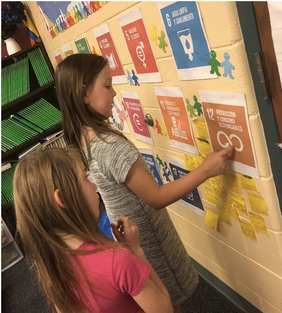 By Ana López Colombia was my inspiration to become a teacher. I was born and raised in a beautiful country that reveals extraordinary natural diversity and social beauty, but also discloses a history marked by inequality, violence and indifference. From my childhood, my education, and my professional background, I have had the opportunity to witness and be inspired by the examples of many courageous people willing to learn and collaborate with other's communities to meet challenges that affect our shared humanity. Their perseverance and commitment cultivated my desire to advocate for positive change by becoming a teacher. My classroom and school provide the opportunity for me to inspire and reveal the interconnection between learning and the construction of a safer and more sustainable and equitable society for all. To do so, the 17 Sustainable Development Goals have become the framework for structuring units of inquiry in which I connect the school curriculum and the North Carolina Standards with the Global Goals. Each of these units aim to answer the question: What can we do to make the world a better place to live by 2030? These units of inquiry also serve as the basis for constant reviews of our actions and their impact, they promote reflection, informed decision-making, initiative, and creative solutions that benefit us all. This approach has allowed my first-grade students to experience firsthand the power of education which does not just happen inside the classroom, but it goes beyond it. It has demonstrated that regardless of their young age, background, or the language of instruction, they can lead the change for a better present and more hopeful future. 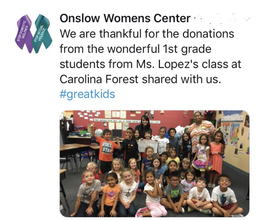 Figure 4: Donations given to Onslow Women Center Figure 4: Donations given to Onslow Women Center For one unit of inquiry named “Building Bridges," which mainly focused on the first six global goals, students learned about the essential elements of a community; children’s rights, needs and wants, causes and consequences of poverty, and how this issue affects communities in the world. As a closure of this unit, students graphed what families needed the most and campaigned to invite close neighborhoods to donate needed items to our local woman’s center.
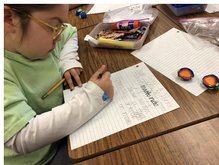 Figure 6: Play-Doh Model of the Layers of the Earth Figure 6: Play-Doh Model of the Layers of the Earth Next, students learned about the layers of the Earth, rocks and natural resources and they explored the world-wide use of plastics. They represented in fractions the amount of resources needed to make t-shirts, toys and paper among other objects. 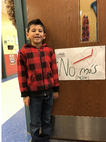 Figure 8: Poster designed by a student to invite the community to stop using plastic straws Figure 8: Poster designed by a student to invite the community to stop using plastic straws My class joined the movement: “No Plastic Straws” and created an herb garden using plastic recycled milk containers from school. To learn about the role we play in the construction of a more equitable and inclusive society, students worked on the unit: “We are all Equal because We are all Different” which main focus was on goals 10, 16, and 17. Students started by identifying the differences and similarities among each other. Then, through a virtual exchange with a class in Colombia, students were able to appreciate what they have in common as well as value cultural differences. Based on their knowledge about human rights, students identified the difference between equality and equity through a photograph analysis activity and by reading pieces of news concerning this problem. From these learning experiences, students recognized the importance of adopting an attitude of kindness and service to others especially towards those who need it the most. To conclude this unit, students participated in a race with children with disabilities and held a Food Diversity Fair to highlight the cultural backgrounds within the class. The benefits of implementing the global goals in the classroom has been very rewarding. This has been reflected by my own students taking initiative to create projects which have had a positive impact in the community. Liliana carried out her own summer project of growing tomato plants and selling them for donations at their moving garage sale. She grew 36 tomato plants and pumpkins and 4 pots of flowers. She gave all proceeds to the World Food Program. 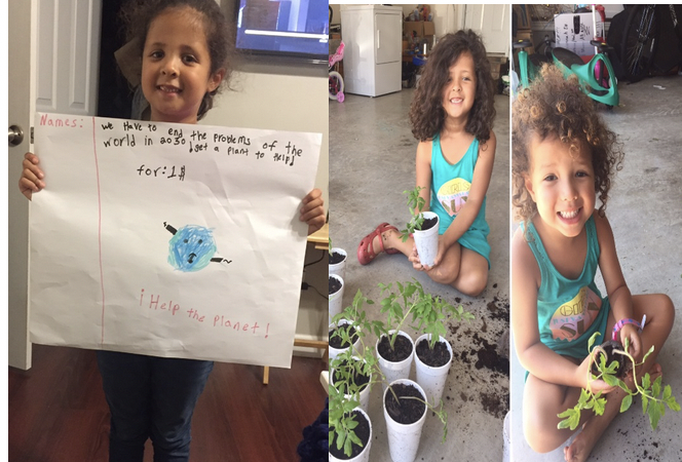 Figure 14: Liliana's summer project Figure 14: Liliana's summer project Alana, for her part, after learning about the water crisis in Flint, visited the city to learn more about this issue and to find a way to help. During their visit, they learned about the Whaley Children Center and the lack of water for the kids who reside there. Alana’s family invited the community to donate money or water. They raised $130 and 48 cases of water were donated. For further information, visit the Web: https://nc02213593.schoolwires.net/Domain/942 or contact me by email: [email protected] or on Twitter: @Analopez849  Ana López is from Bogotá, Colombia. Ana came to the United States with the Participate teaching exchange program. She has been working at Carolina Forest International Elementary in Jacksonville, NC as a self-contained teacher in a first-grade Spanish full immersion program. She strongly believes education is not covering a wide range of isolated content expected to be recited by heart; it is an instrument of social, economic, scientific and political change especially today, given the monumental global social and environmental challenges that the world is facing and confront each and every one of us. By Monica Joshi Use of technology has revolutionized the teaching learning process. From a teacher centered approach, it has become more child centric now. Teachers are now able to speak the language of technology that the children understand easily. As a new age teacher, it is my duty to make my students equipped for the future and inculcate the skill of enquiry and knowledge building in my students. It is also my duty to create an environment of blended learning where the students are using tools to create and learn about various situations. Using virtual classroom concept, I am able to connect my students globally. It has changed my classroom like no other tool. My students know that in a click of a button we can learn more about a topic or more about people from around the world. So, let me tell you first that a virtual classroom is an online classroom that allows participants to communicate with one another, view presentations or videos, interact with other participants, and engage with resources in work groups. Let’s take a step back, and I’ll explain. Being a Microsoft Innovative Educator Expert, I had an opportunity to attend the Microsoft Education Exchange held in Singapore, where I got connected with educators around the globe. I got a clear picture that when using technology and a virtual classroom, I can:- · Know more about the world outside my classroom · Communicate, collaborate, and connect · Learn, practice, and enhance our skills multifold using real life relevance. Being inspired from this visit, I decided to provide global experiences to my students and teachers. Being an IT head, I have virtually connected through Skype, Zoom, Flipgrid, and Padlet on almost all the topics and participated in almost 100 sessions with around 30 countries in just the last two months on the following subjects: o Science – On topic food and health and climate change o Art – Creating posters on Earth Day o Climate Action –To create awareness on advocating complete Ban on the usage of plastic o STEAM –Worked on a lesson on Topics Data Handling, Gears, Concept of Torque. The Lesson plans can be viewed HERE and HERE. o Emotional and Spiritual Well Being – I have conducted a guest lecture online to apprise the audience about the importance of Yoga and Meditation. HERE is the link of my Lesson. o Minecraft – Being a Minecraft Global Mentor, my students and I are equipped to teach Minecraft to peers and locally and globally. Here are the links of some of my Minecraft lessons that are uploaded on Minecraft community and can be used by anyone: § https://education.minecraft.net/lessons/lets-understand-empathy/ § https://education.minecraft.net/lessons/holiday-adventure/ § https://education.minecraft.net/lessons/fun-with-creative-writing/ § https://education.minecraft.net/blog/mentor-of-the-week-monica-joshi/ o Mathematics – On the topic quadratic equation and Number system. o Social Science – On the topic for #DIY4Earth, where my children have made sustainable products from the old rags and discarded products o Augmented and Virtual Reality – Collaboration with Finland. o Sustainable Development Goals o English – Teaching prepositions, nouns, and articles to children of support staff of SRDAV Public School New Delhi. o ICT– I am conducting webinars and training sessions conducted for my teachers and educators across India and in other countries on every second and fourth Saturday of the month. I am training them about the latest technology tools to be used in the pedagogy. I have my YouTube Channel where I am posting all these recorded talks after conducting the live sessions. The name of my Channel is TECHTALKWITHMJ. Here are the links of few of my talks. § https://youtu.be/d_1Sm1KPBok § https://www.youtube.com/watch?v=JRQ3pd-WT00 § https://www.youtube.com/watch?v=kCDggX4qpvM&t=175s I believe that hard work is contagious. I spread more when you share it with others. Let me apprise you with the procedure: The first step is, I find an educator and send him/her a request for collaboration on the same topic. Sometimes schools in the same country often share a similar curriculum, teachers can easily find joint projects, like reading the same book and hosting student conversations over Skype, that can help them construct lessons that map to academic standards. Sharing projects with others around the world really motivates students. Once they have a real audience to whom they are responsible, they tend to feel more accountable. My children have collaborated with different countries on the following topics: · Holidays –With Dondi Gyöngyi Tóthné Bán, Primary School teacher in Balatonboglár, Hungary Using Scratch, Minecraft and Skype. · Traditions –With Roshan Kumar, Srilanka Using Sway and Skype · Food –With Maria Josè Giavedoni from Argentina using SWAY, Paint 3D, Minecraft and Skype · Art works –With Dieu Duong from Vietnam using Minecraft, Scratch · Good Health –With Meenakshi Uberoi Gurgaon Using Sway, YouTube and Skype · School life –With Soheir Zaki from Egypt Using Skype and Zoom · Our town/city –With Ashoka Global Academy Nasik Using Skype · Empathy and Value Education –With Nam Ngo Thanh from Vietnam using Buncee, YouTube, and Padlet (https://namngovas.wixsite.com/everydaykindness https://namngovas.wixsite.com/everydaykindness/the-wonder-called-kindness) · Innovation –With Miriam Lucrecia Higueros Aldana from Guatemala using YouTube, Minecraft, Renderforest, Sway and Minecraft. (http://www.teachsdgs.org/blog/creating-innovative-minds-inline-with-sustainable-developmental-goals) · Women –With Pedersen Terje from Norway using Flipgrid. Secondly, now is the time to take it a step forward. I registered for an ambitious project of service through global collaboration, the Project Kakuma founded by Koen Timmers, a top-ten finalist of the Global Teach Prize. Project Kakuma involves collaboration by teachers across six continents to offer free education to African refugees in Kenya via Skype. I deem it as an honour to be a part of this noble venture, wherein I am teaching refugees virtually. I have also got an opportunity to teach the girl child of support staff of SRDAV Public School New Delhi using Skype. Third, virtualization was connected for empathy education. Encouraging a sense of empathy in children at a young age helps them develop lifelong skills that will serve to help them understand other cultures and respond positively to them. I joined hands with 17 Global Goals wherein I took a pledge to sensitize the youth about the UN Sustainable Goals. Charity begins at home. So, I involved my students in global projects. Today’s children understand things better if they are involved at the grass root level. To do so, in the summer break children were given time to prepare a project using MS Paint, MS PowerPoint, MS Word, Movie Maker, Scratch, HTML, and Google Slides on Sustainable Development Goals. Children were to use the application grade respective and they have to weave a story using any three Sustainable Development Goals. Before giving this homework, I was quite apprehensive. But, to my surprise children came with great and thought provoking ideas. Using these projects my children connected with other educators and students in Africa, Vietnam, Canada, Argentina, Seattle, Nepal, India, Denmark, Poland, Finland, Hungry, Thailand, Srilanka, Egypt, England, Iraq, Saudi Arabia, and Malaysia via Skype. This allowed them to be sensitive of the Sustainable Development Goals and their importance. Fourth, I have used various tools for virtual classroom as: Skype, Minecraft, Sway, Flipgrid, Onenote, Forms, Quizlet, and Padlet. I have used these tools for taking the assessment of the children virtually. A link of assessment was shared with the student on their login and Email ID. It was the choice of children to do the assessment at home or in school. In fact in many projects, I had students of other countries also participated and they presented their views on many sensitive topics. The tools used for Assessment are as follows: Real Life relevance: Skype Problem Solving: Kodu and Minecraft Collaboration: OneNote, Padlet, Flipgrid, Tondoo Reflection: Sway, Prezi Assessment: Google Forms, Microsoft Forms, Kahoot, Quizlet Use of Minecraft has made the Quadratic equation concepts easier and understandable that even the quietest child starts responding in the class. Digital inclusiveness and technology has become the need of the hour for the schools to create individuals adept with 21st Century skills. The roles of teachers and schools have become very challenging, complex, and multifaceted, which requires preparation on the part of the schools and teachers. There is a need for a paradigm shift from traditional practices to practices which are knowledge driven and ICT empowered in this present era of globalization. The virtual classroom concept has broken the barriers and has made the world accessible at the click of the button. Soon, it will not be surprising if a virtual learning dominates every other aspect in the years to come. So, I feel it is very important to stay abreast with the changing environment by evolving every minute as an educator in order to facilitate the youth of the 21st century who have inherited technology right from the birth. 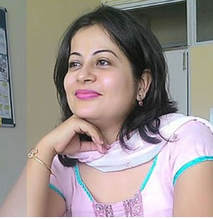 I am Monica Joshi, IT Head, Sat Paul Mittal School, Ludhiana, Punjab, India. I am an SDG enthusiast and so do are my students, and it inspire me to take this as a challenge and currently I work to promote SDG’s through projects for my students, teachers and support staff.I am anMIEE [Microsoft Innovative Expert], MIE Master Trainer, Minecraft Global Mentor, MEC Guest Speaker. Recently, I was selected for E2 – Microsoft Education Exchange, held at Singapore. I had presented a #Teachtalk at Edutech Asia-2017. My case studies has been published in Teaching and Technology case studies from India by British council in collaboration with Central Square Foundation. As a new age teacher it is my duty to make my students equipped for the future and inculcate the skill of enquiry and knowledge building in my students. Besides this I am an avid traveler and love to convince others to travel. Connect with Monica Joshi on Twitter at @klnamya 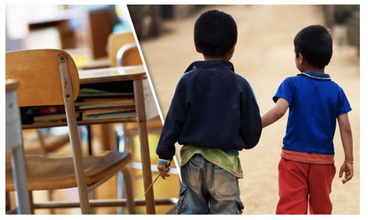 By Nam Ngo Thanh I was born in a rural area of Vietnam. I spent five years of my childhood in that peaceful countryside. However, when I was eight years old, my parents decided to immigrate to the city. Since then, I have encountered many difficulties in this new environment. One of the difficulties occurred in my school. Based my own experiences as a child, I am interested in educating immigrant children. I believe that every child deserves a good education. For the education of a well-to-do country, we need to pay attention to all class of people in that country. For a long time, migration has not been a new topic. Migration affects many factors of a city or country. One of them is education. It is easy to see how migration will affect education in both positive and negative aspects. What is the causes of immigration? In any country, we always have immigration status. There are two main types of immigration: immigration within the country, which can be families moving from countryside to city and migrating from one country to another. There are many reasons for immigration, such as adults want to find a better job--better than no job or low income job. For some households, migration is to achieve higher levels of education and better education environments. However, regardless of the cause, adults only think about the good things they wish to have, but they sometimes do not anticipate the negative effects that can occur, especially with their children. “Learning is not important by making money” It is a locality of immigrants in the leading category in Vietnam, Ho Chi Minh City that also faces shortcomings in the access to education of children of migrant families. This makes migrant children more vulnerable to the right to care and play because parents have to work many shifts for overtime and still have low income. The majority of respondents said that migrant children have limited participation in local activities because their parents do not have information or spend time working so they do not have time to pick up their children. In addition, most of the children of migrant workers are dominated by family-run businesses. Therefore, children have difficulties in learning and playing. Some parents think that learning is not as important as earning money, so they often let their children trade and make a living. This can create learning disruptions and can cause negative effects on the children. Public schools are also cautious about accepting immigrant children in their educational settings. High fees at private schools are also a major obstacle for immigrant families, although they are welcome in these places. Education policies are primarily targeted at children in the local area, with little consideration to migrant children. Sometimes, obstacles encountered by immigrant children come from the teachers who receive them. Teachers can be uncomfortable teaching students with many learning limits. They may think they will make their work harder. Cultural differences are also a challenge that children often encounter. In some cases, although they have access to a new learning environment, differences in lifestyles, religions, the gap between the rich and the poor, and communication skills make it difficult for them to integrate. Others are easily bullied without the proper attention of the teacher and the school. When migrating to another country, language barriers are the biggest problem they face. We can easily visualize the obstacles they face when they have to study in an environment where it is hard to communicate in a common language. What solutions are there for immigrant children? Children are always innocent of their family's immigration. Therefore, localities, schools, and teachers need to be empathetic when it comes to accepting and giving them opportunities to learn in a new environment. We need to realize that learning is the right thing for every child to enjoy. Therefore, there is no reason for them to be pushed out of a school. Local authorities should also have a mandatory requirement for parents of immigrant children to bring their children to school. Parents have no right to deprive children of the right to education. Knowledge of integrating the child as well as individual instruction with students who have learning limit should be provided to the teacher in a sufficient way. We do not know for sure whether a child will have to move in the future, however, every school and teacher needs to be ready to adapt if that happens. All children in the 21st century need to learn as well as orient themselves to cross cultural boundaries, regardless of ethnic, race, age, geography, or other boundaries. The skills of self-protection when at risk of harm; sharing the thoughts or difficulties encountered should also be the school’s interest in the process of educating the children. Children also need to be taught sympathy, love of human kind so that they are ready to welcome immigrant friends to their class and community. Addressing the issue of education for immigrant children has never been simple for us. However, if it comes from love for children, I’m sure we will find a solution to this problem. Every child has the need to be educated so that he or she can act as an independent economic actor in the future and ensure his or her life. 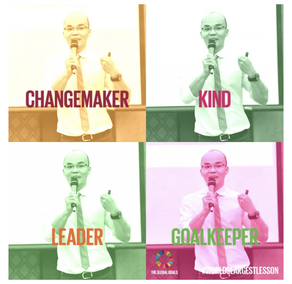 Nam Ngo Thanh is now a manager of technology academy department in Ho Chi Minh City, Vietnam. He has authored multiple articles, and he has been nationally and internationally recognized for the implementation of creativity and the integration of technology into his teaching. He is the founder of many global projects Five Safe Fingers, Kindness Everyday, Stem, SGDs in actions,.... Nam is now Microsoft Master Trainer, Skype Master Teacher, and Microsoft Learning Consultant. He works passionately to develop creative approaches to delivering quality education to his students in ways that inspire them to learn. He has selected in top 50 Global Teacher Prize Finalist and he is also the winner of Asia Educator of the year 2017, 2018 Global Innovation Collaboration Award and Digital Citizenship Champion. How voices from the frontline of climate change in Bangladesh are teaching secondary school pupils9/3/2018
© iStockphoto.com/MachineHeadz
By Dr. Joanne Jordan, @JoanneCJordan
Since my first trip to Bangladesh in 2008, I have lost count of the number of times I have been asked the same question by those I interview as part of my research: "Will you tell our story so people know how we live?" The Lived Experience of Climate Change Project emerged from an attempt to do just that, to engage the "voices of low-income people" to ensure that diverse publics are better informed of their needs and priorities. For my research looking at urban climate resilience and how land tenure affects adaptation to climate change, I spent months in the Duaripara informal settlement in North-west Dhaka talking to over 600 people in their homes, workplaces, and local teashops and on street corners to understand how climate change affects their everyday lives and what solutions they employ.
By turning their testimonies into interactive theatre performances, documentary film, educational programmes, and public events aimed at a wide range of people, we were able to fully engage affected communities in the research findings and build awareness and action on the everyday realities and impacts of climate change on low-income people in Dhaka.
The use of accessible and entertaining engagement activities helped animate and make the needs and priorities of low-income people much clearer, and it meant that I was able to reach a very diverse range of people nationally and internationally with varying levels of knowledge on climate change, education, literacy, and language skills. Free Teaching and Learning Resources Enhancing people’s awareness and knowledge about the global effects of climate change is essential for catalysing a response. Education equips young people with the information and skills required to make informed decisions and take responsible actions. Climate change education formalised within the Action for Climate Change Empowerment agenda of the United Nations Framework Convention on Climate Change urges countries to enhance learning on climate change through public awareness and curricula. The Lived Experience of Climate Change centered on the involvement of students as part of a broader teaching and learning strategy. The project worked with the University of Dhaka to integrate the performance theatre project into their MA programme. I also used video outputs from the project as teaching resources for MSc programmes at the University of Manchester, and we worked with Year 13 BTEC Performing Arts students from Regents High School in London to re-enact key scenes from the theatre performance at public events in the UK. The project has recently developed teaching resources to give secondary school geography teachers in the UK and Ireland support to teach pupils about climate change and help young people develop the knowledge and skills to think critically about climate change in an urbanising world. Climate Change in Urban Areas: Bangladesh Case study has been designed to achieve impacts on learning outcomes, attitudinal shifts, and behaviour change. The resources translate research into classroom sessions around the everyday realities and impact of climate change on the lives of low-income people in Dhaka. Using videos, powerful images and comprehensive background information, students can explore the impact of climate change on low-income people and understand the different social, economic and environmental factors involved. To accompany the teaching resources, a mini film series funded by the Arts and Humanities Research Council’s Research in Film Awards was recently launched, where three residents from Duaripara, Rohima, Nasrul and Sufia, directly convey their own stories and experiences in the series "Living on the Frontlines of Climate Change."
Upon completion of the sessions, students are expected to gain an understanding of both the effects of climate change in Bangladesh and how the effects of climate change impact the lives of low-income people in Bangladesh. Students are actively encouraged to reflect on their own attitudes and behaviours in a range of individual and group activities. The teaching resources have been approved by a range of organisations that enhance and support young people’s geographical and global learning development, including the Royal Geographical Society, Geographical Association, Global Dimension, Geographical Society of Ireland, and Association of Geography Teachers of Ireland. For further information on the project: Web: https://bit.ly/GDIpotgan Twitter: #GDIpotgan@JoanneCJordan Facebook: http://bit.ly/GDIpotganFacebook YouTube: https://bit.ly/GDIpotganYouTube Email: [email protected]k 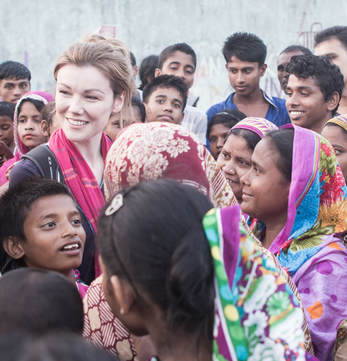
Dr Joanne Jordan is an environmental social scientist with over 10 years of experience as a researcher on climate change adaptation. Much of this work is based on intensive empirical research at the local level, mostly in Bangladesh and more recently, India. She specialises in climate change resilience and vulnerability, risk perception and culture, and climate change communication and knowledge exchange for impact.
Dr. Jordan is an Independent Research Consultant, Honorary Research Fellow at the University of Manchester, and a Visiting Researcher at the International Centre for Climate Change and Development. Prior to this she was a Lecturer at the University of Manchester, a Post-doctorate Research Fellow at the Institute for Sustainable Development and International Relations at Sciences Po in Paris, a Research Assistant at Queen’s University Belfast, and has worked at a range of not-for-profit organisations in Cambodia, Peru and Belize.You can connect with Dr. Jordan on Twitter at @JoanneCJordan. |
AuthorSTeachSDGs Team & Contributors Archives
November 2019
Categories |
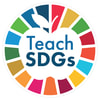
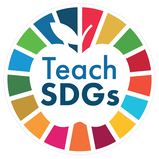
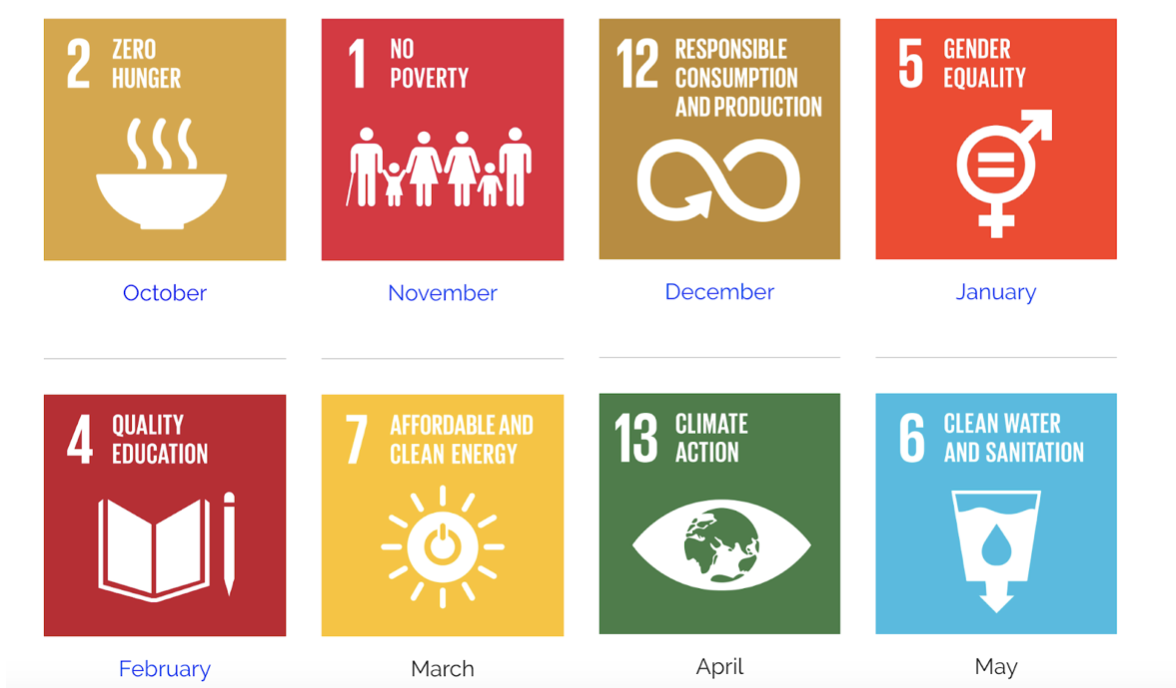
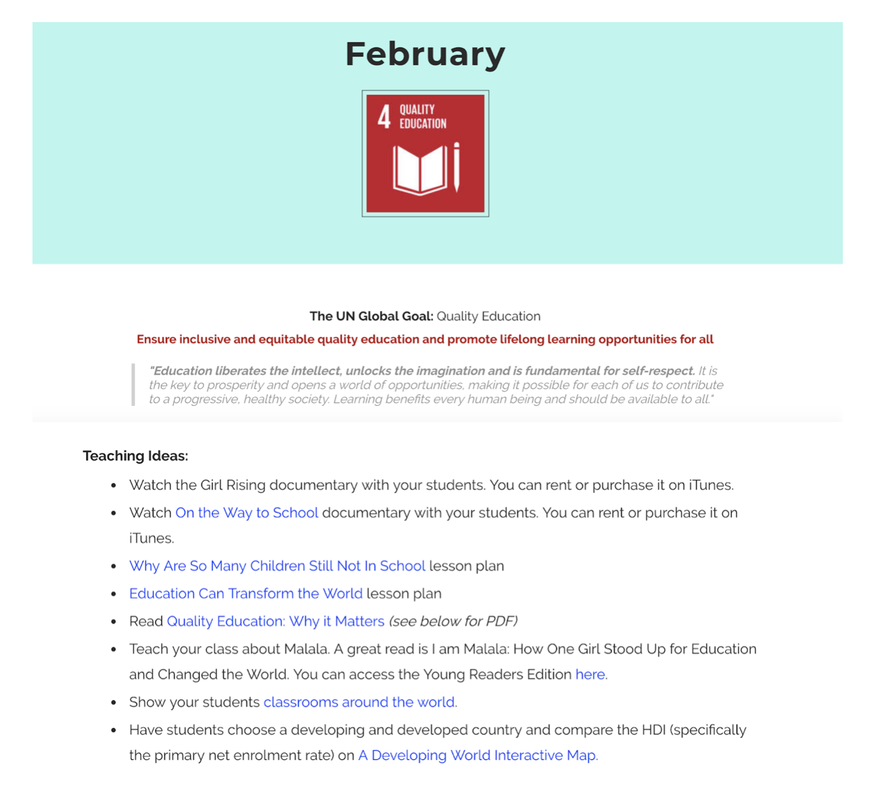
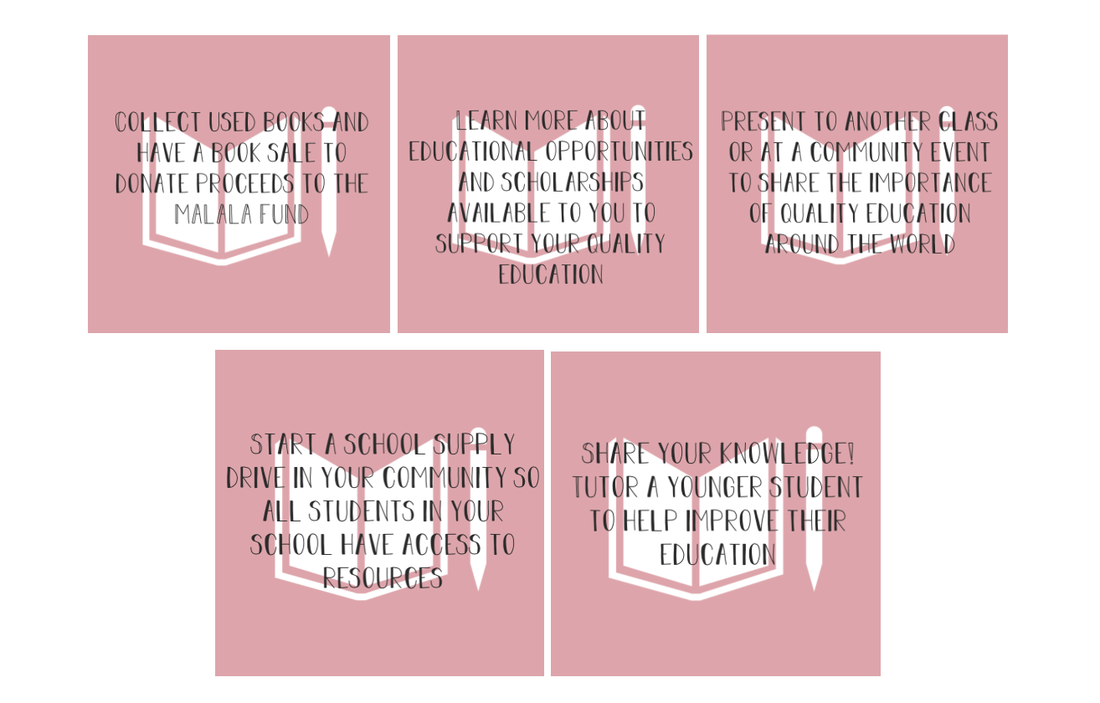
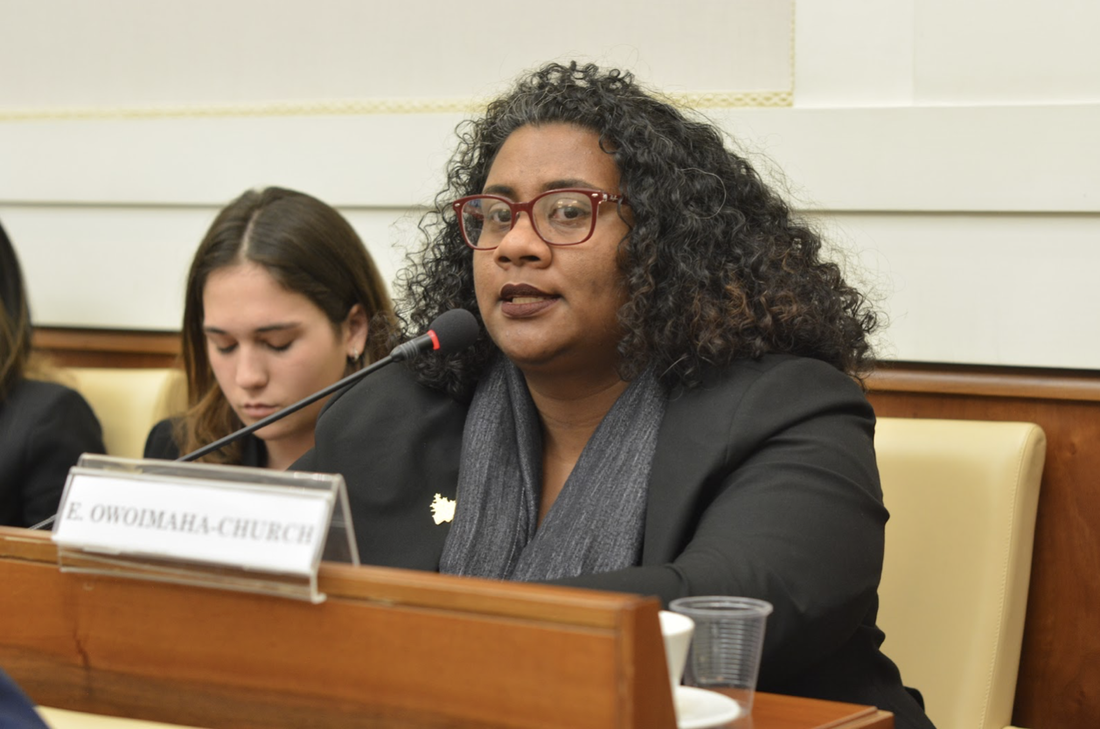
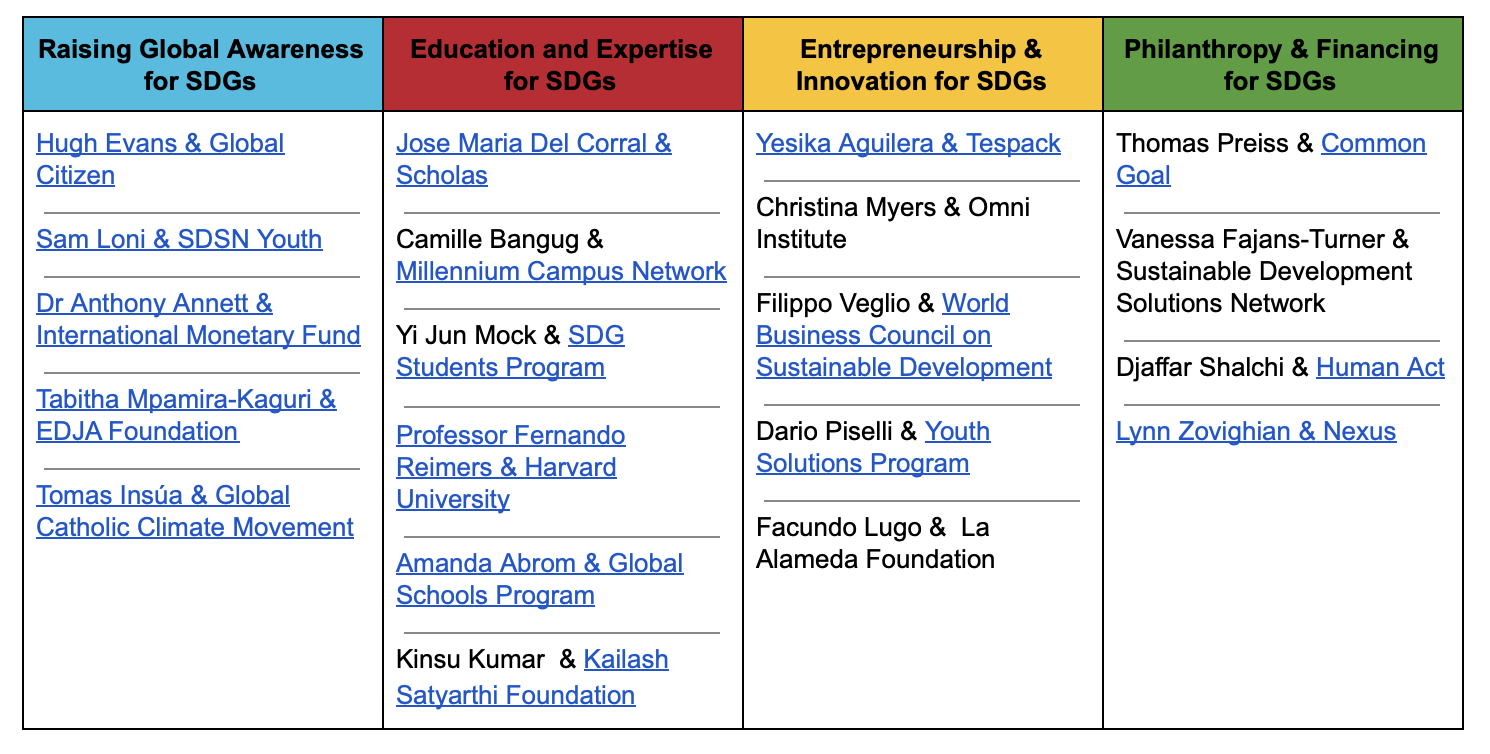
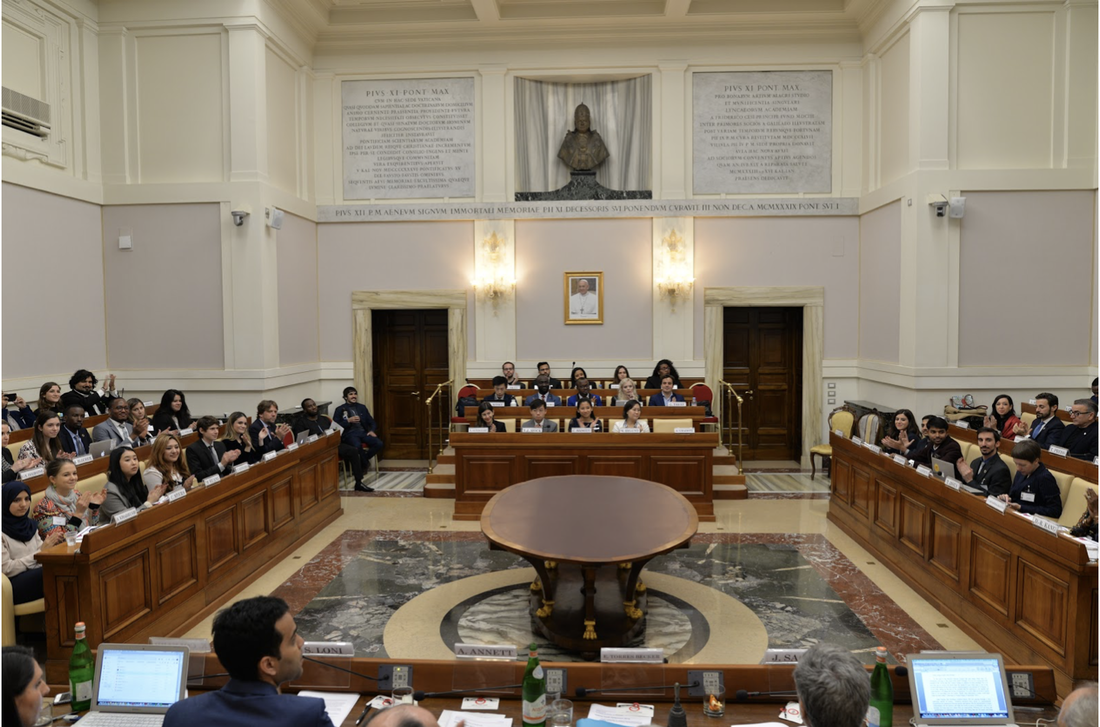
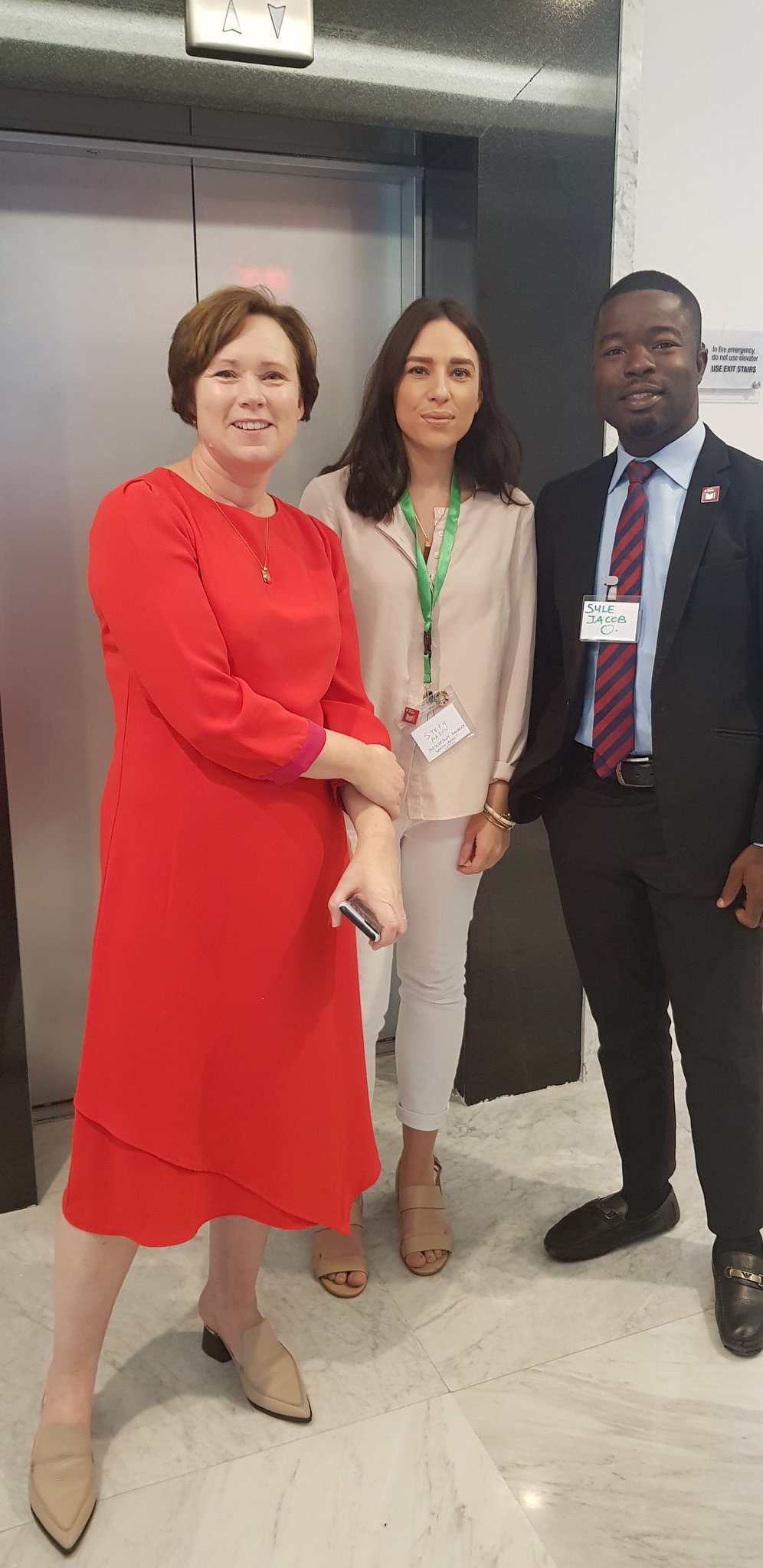
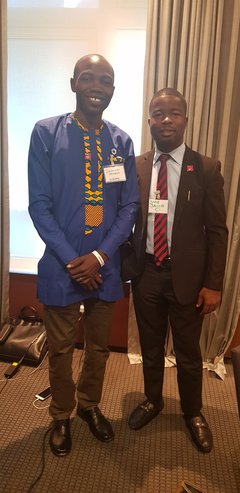
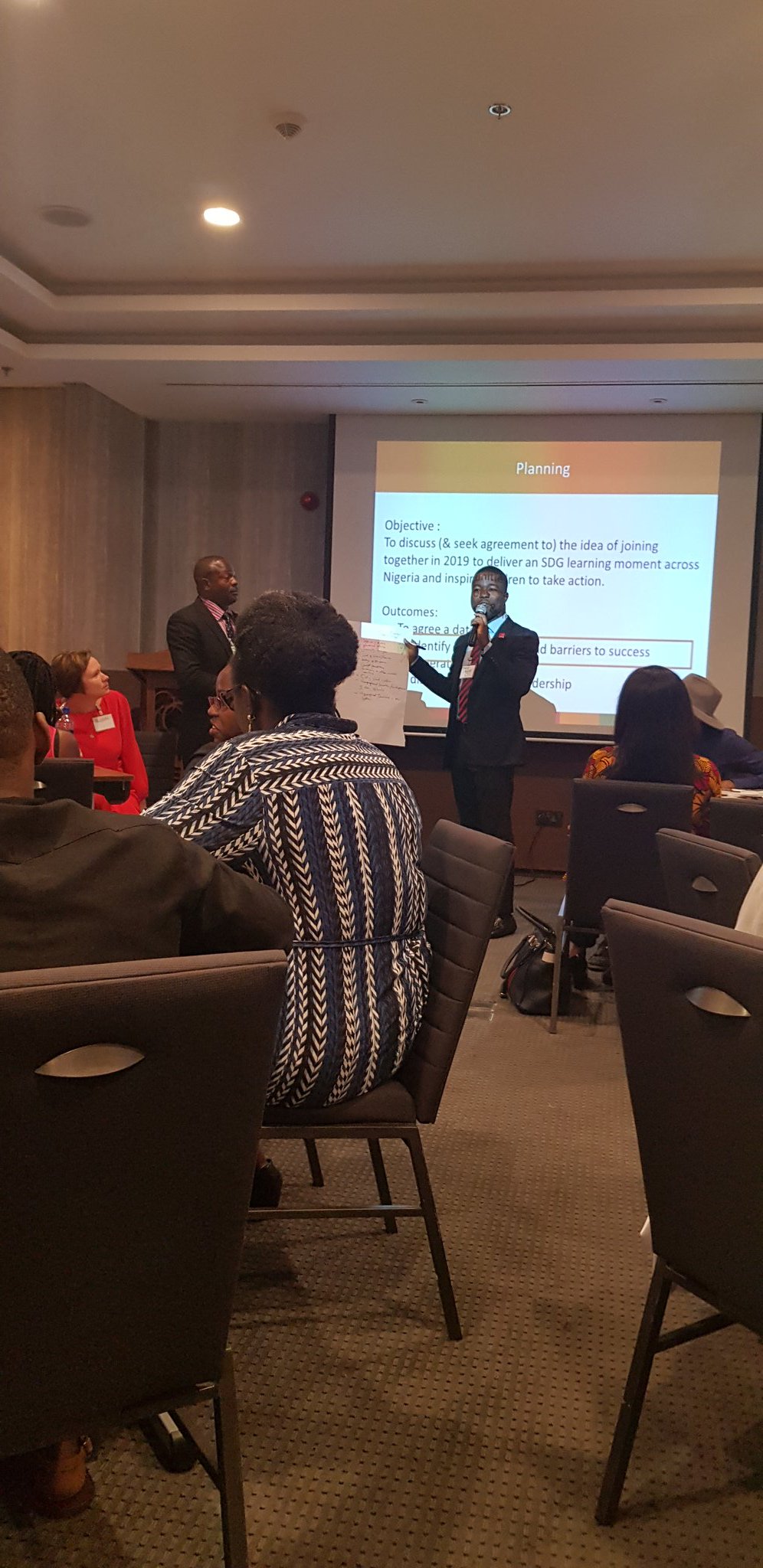
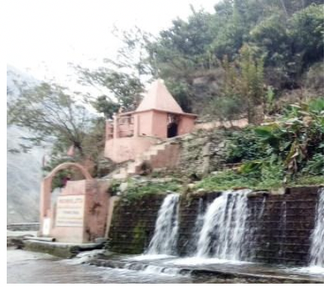
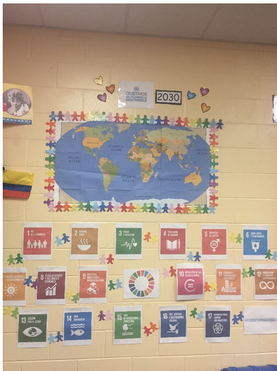
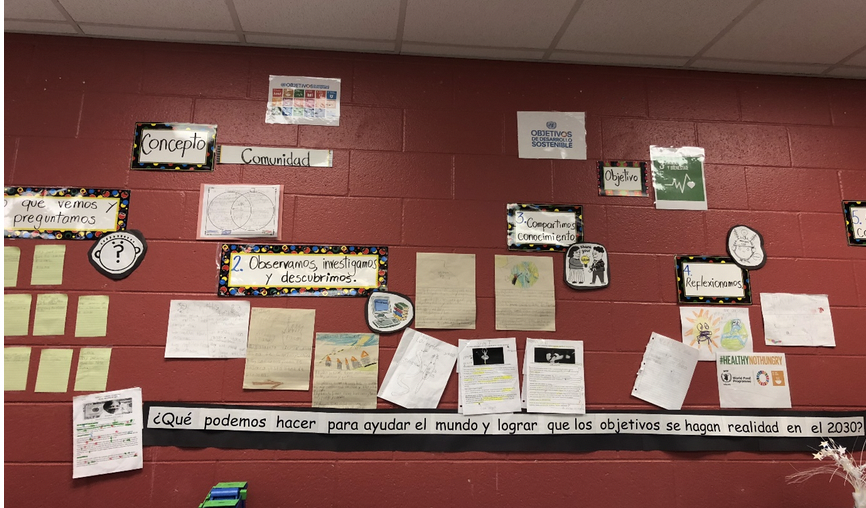
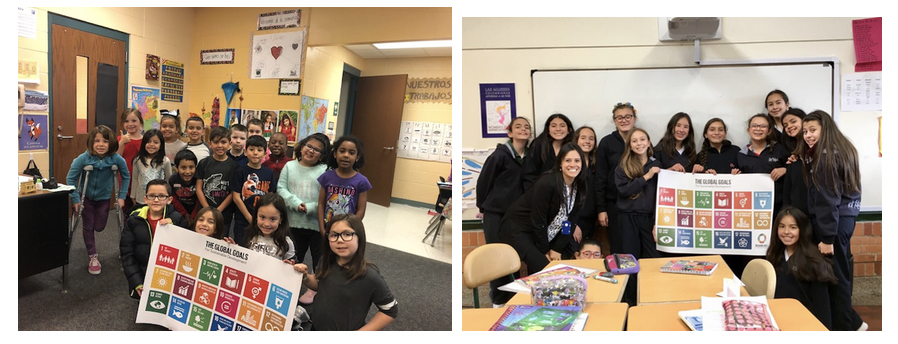
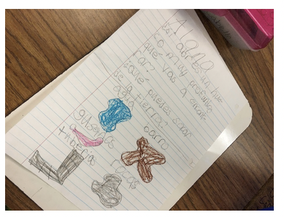
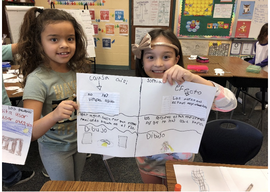
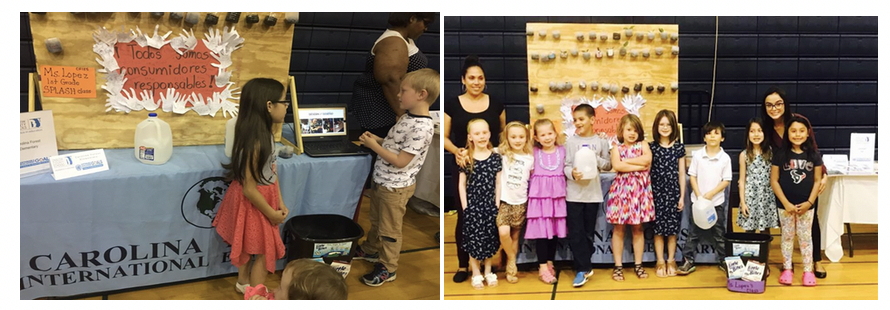
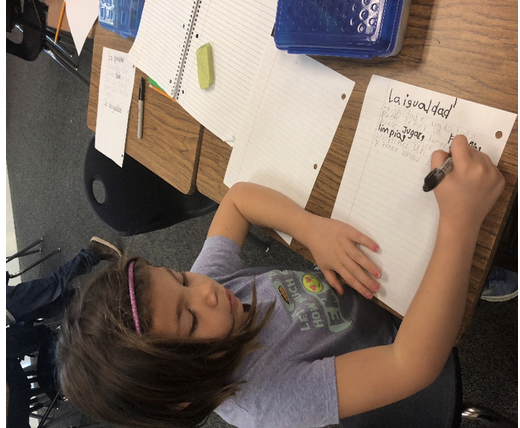
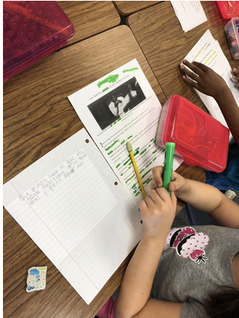
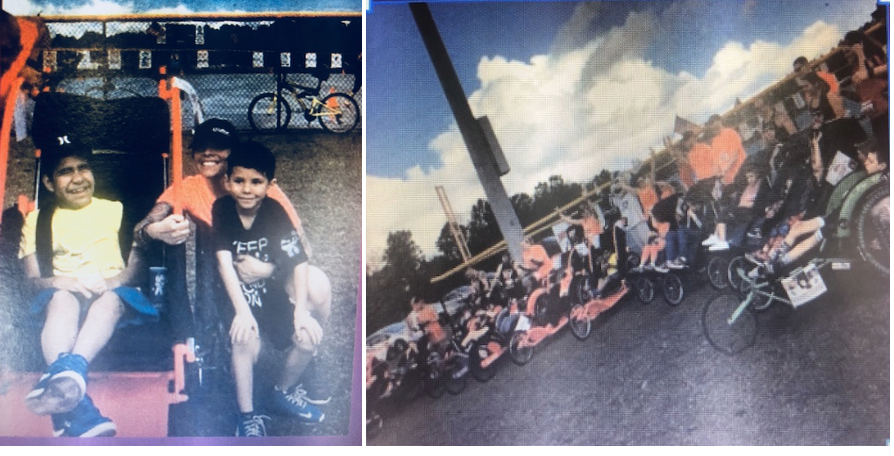
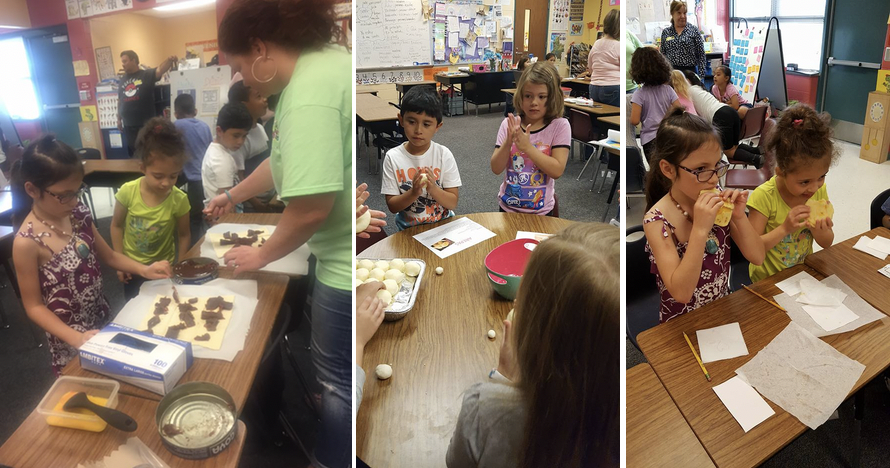
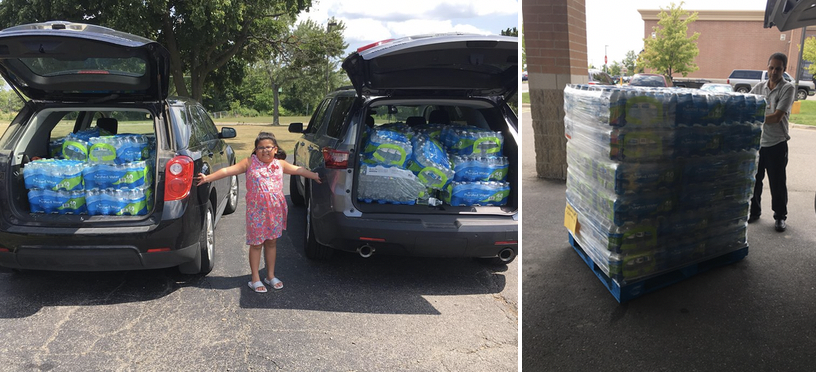


 RSS Feed
RSS Feed